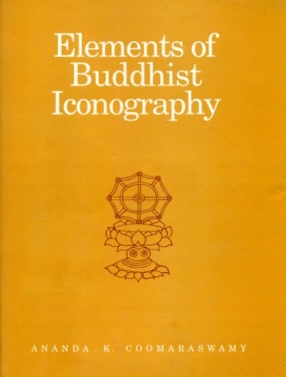Particular significance attaches to Yaksas in Indian mythology, religion and art. Their almost universal presence in the earlier Indian religions, Hindu, Buddhist and Jaina, wherein they are invested with peculiar traits and powers, indicates their importance. Ananda Coomaraswamy’s Yaksas is an attempt at bringing together the mass of information from literary and monumental sources about Yaksas and Yaksis, their origin, and development from the conceptual, mythological and iconographical points of view. Coomaraswamy has shown how this non-and pre-Aryan "animistic" concept originated and, in the historical times, dovetailed with the Hindu, Buddhist and Jaina religious systems to the extent that the concept of Yaksattva got closely bound up with the idea of reincarnation. In the preparation of this monograph, Coomaraswamy has extensively drawn upon the sectarian and semi-secular literature and has shown unmistakable evidences of the Yaksas’ once honourable status, their benevolence toward men and the affection felt by men toward them. Coomaraswamy begins by tracing the origin of the word yaksa which is first found in Jaiminiya Brahmana, where it means nothing more than ‘a wondrous thing.’ In course of time Yaksas and Yaksis are often mentioned and their names are found in the Epics, Buddhist and Jaina works and even in sculpture. In Jaina books Yakkhas are often called Devas, where, as Sasana Devatas they are usually guardian angels. In Buddhist works they are sometimes represented as teachers of good morals and as guardian spirits. Of equal importance are the Yaksas and Yaksis in early Indian art and in the early examples (Bharhut, Sanci, Gandhara, etc.) they are frequently represented as Atlantes, supporters of buildings and superstructures. The early iconography of Yaksas, again, seems to have formed the foundation of later Hindu and Buddhist iconography. Coomaraswamy has traced a kind of Bhakti cult centering round the worship of Yaksas on the basis of the Yaksa caityas, the offerings to the Yaksas and has tried to show that the facts of Yaksa worship correspond almost exactly with those of other Bhakti religions. Coming as it does from the pen of Ananda Coomaraswamy, this brilliant monograph is the acme of scholarship and brilliance and provides a mass of well-documented information. The work is divided into the two parts, an Appendix giving Tale of a Yaksa found in the Divyavadana, alongwith 73 plates.
Hinduism and Buddhism
$13.50
$15.00







There are no reviews yet.